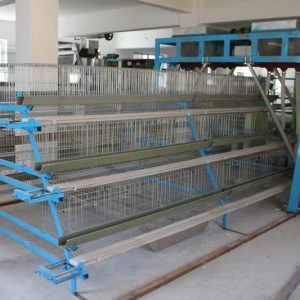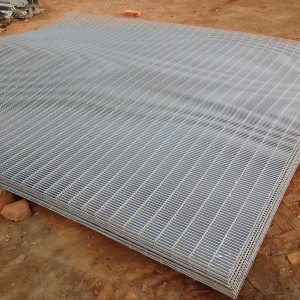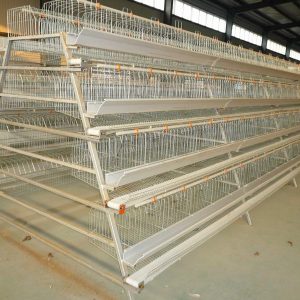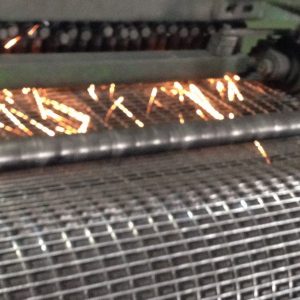
Prevention and treatment of common infectious diseases in chickens
In order to reduce or avoid the occurrence and spread of chicken infectious diseases and reduce economic losses, chicken farmers must firmly establish the concept of prevention first. In the whole process from planning to raising chickens, the prevention of infectious diseases must be put in the first place. At the same time, it is necessary to keep abreast of the epidemic information of neighboring chicken flocks, and according to the development of the epidemic situation, take the most advanced prevention and control measures to control the loss to the smallest extent.
Strengthen veterinary hygiene measures
Strict guard system to prevent the spread of pathogens
There should be disinfection facilities at the gate of the chicken farm, the gate of the production area and the gate of each chicken house, such as vehicle disinfection pool, foot disinfection pool, disinfection hand basin, and chicken farms with conditions can set up spray disinfection rooms, changing rooms, and bathing rooms. .
The gate of the chicken farm and the gate of the production area shall be equipped with guards, and the isolation system and disinfection system shall be strictly implemented; visits are not allowed, and people, vehicles, and animals of all kinds are not allowed to enter the site; vehicles and personnel permitted to enter the designated location of the site must be carried out according to regulations Strict disinfection; only production and management personnel can enter the production area (or chicken house), but before entering, they must go through changing clothes, changing shoes, putting on special clothes and shoes (boots) in the production area, and disinfecting by disinfection tank and hand washing, etc. program.
Strictly implement sanitation and disinfection system
(1) According to the conditions of the chicken house, formulate a system for regular cleaning, regular removal of manure and regular disinfection of the chicken house, and a special person should be appointed to be responsible.
(2) When a highly contagious infectious disease occurs in a chicken farm or a chicken house, strictly isolate or lock down under the guidance of veterinarians, and use 2% to 3% caustic soda or 10% caustic soda for chicken activity sites and feces. %~20% hot lime milk is disinfected at any time. Use high-efficiency and low-toxic disinfectants to spray disinfect the chicken house.
(3) Disinfection procedure before entering the old chicken house: completely remove all items in the chicken house → clean the floor, roof, walls and every corner of the chicken house → spray with disinfectant once → clean and disinfect the breeding management tools and work clothes 、Move the shoes into the chicken house → Close the doors and windows of the chicken house 4-7 days before entering the chicken, use potassium permanganate 21 g/m3, formalin 42 ml/m3 fumigation for 24 hours, ventilate for 2 days, and disinfect the chickens After spraying, the liquid enters the chicken house.
Put good
When it is necessary to introduce breeding eggs and chicks from other places, the epidemic situation, maternal antibody status and Marek’s disease immunization of the breeder farm must be conducted on-site inspections. The complicated epidemic situation, poor sanitary conditions, maternal antibody levels of breeders, and Marek’s disease Breeder farms that fail to pass the vaccination introduce breeding eggs and chicks.
Formulate scientific immunization procedures to ensure the quality of immunization
Develop or select **immunization program
The purpose of formulating the immunization program is to use minimal manpower and material resources to receive the best immunization effect, so as to comprehensively improve the immunity level of the chickens against infection, and achieve the control and elimination of the corresponding infectious diseases.
Ensure the quality of immunization and avoid immunization failure
(1) Purchase high-quality vaccines produced by qualified manufacturers, and do not have to expire, expire, improperly preserved, and incompletely labelled and incomplete vaccines.
(2) Choosing the best time to immunize: the chicken body has not yet developed immunity and the pathogen has invaded after being immunized too late, such as Marek’s disease vaccine must be vaccinated as soon as possible after the chicks are out of the shell; some infectious diseases such as infectious bursal disease, If the maternal antibody of Newcastle disease is too high.** During vaccination, the maternal antibody will affect the immune effect; the interval between two immunizations is too long. If the chick is vaccinated with Newcastle disease II vaccine one month later, the chicken will be immunized The power has fallen to the point that it is not enough to resist the virulent infection, and the re-immunization is still delayed; if the chicks are immunized with several live vaccines at the same time, the immune effect of some vaccines will be affected and lead to failure.
(3) Choose the correct immunization method. In drinking water immunization, chlorine-containing tap water or water with too high pH should not be used; metal drinking fountains should not have residual sterilizers in the drinking fountains; vaccines should not be stored in the drinking fountains for too long (not more than half an hour) to avoid causing The effectiveness of the vaccine has decreased. The lyophilized vaccine diluted in intramuscular or subcutaneous injection cannot be stored at room temperature for too long (6 hours) to ensure vaccine activity; the adjuvant must be shaken before use; the injection dose must be accurate. During nasal drops, eye drops, or scratches, the vaccine drip rate should not be too high or too fast. The vaccine must enter the eyes, nose and cut skin.
Drug prevention
Scope of application
It is used to prevent the occurrence and spread of bacterial diseases and protozoal diseases, using various antibiotics, sulfonamides, antibacterial synergists, furans and quinolones to prevent and early treat various bacterial diseases (mainly chicken salmonellosis) , Aspergillosis, Colibacillosis, Fowl Cholera, Chicken Infectious Rhinitis, Chicken Mycoplasma Staphylococcus, Pseudomonas aeruginosa) and Protozoa (mainly chicken coccidiosis, appendic hepatitis and chicken leucocytosis).
Correct choice and use of drugs
(1) On the basis of correct diagnosis and testing, select drugs that are symptomatic or sensitive to a pathogen. If it is a bacterial disease, a drug susceptibility test can be used to select the most sensitive drugs for prevention and treatment, which costs less and has good effects.
(2) It is safer to choose drugs with low toxicity and weak side effects when the control effect is similar. When killing pathogens in the environment, choose a disinfectant that has a good disinfection effect, is harmless to humans and animals, and is less corrosive to equipment and utensils.
(3) In the case of similar epidemic prevention effects and safety, drugs that are cheap, widely available, and easy to store and use should be selected as far as possible to reduce the cost of chicken farms.
(4) Administer drugs according to the prescribed dosage and concentration, especially sulfonamides, olaquindox and other drugs that are sensitive to chickens. According to the prescribed course of treatment, under normal circumstances, a flock cannot mix drugs with similar effects at the same time, let alone use several drugs that have antagonistic effects at the same time. Choose the most appropriate method of administration, make sure to use the prescribed diluent, and use it regularly and quantitatively within a short period of time after dilution, so that the drug can fully function in each chicken.
Measures to fight the outbreak
For infectious diseases, especially acute and severe infectious diseases, early detection, timely and accurate diagnosis, and rapid targeted measures can effectively stop the spread of infectious diseases. Therefore, chicken breeders must ask the breeders to carefully observe the activities and health of the chickens frequently. If abnormal behaviors, especially suspected of mutual infection, are found, they should immediately report to the veterinarian or production management personnel, and the relevant person in charge must rush to the scene immediately When it is deemed necessary, it is necessary to organize forces for diagnosis as soon as possible. During the diagnosis process, suspected or confirmed acute bronchial diseases such as Newcastle disease, avian influenza, infectious bursal disease, infectious bronchitis, fowl pox, chicken cholera, and infectious rhinitis must be immediately isolated. It is possible to reduce the range of activities of sick chickens, and spray disinfection with 2% to 3% fire lye on sites contaminated with excreta and secretions of sick chickens. Contaminated bedding and feces should be completely removed, burned or piled up and fermented contaminated utensils, work clothes, and shoes, fumigated with formalin, and signs are set up at the gates to prohibit entry and exit of people and animals.
In addition, corresponding measures must be taken for serious infectious diseases. For example, sick chickens diagnosed with highly pathogenic avian influenza, Newcastle disease, and Marek disease should be killed and the carcasses treated in a harmless manner.
Newcastle disease, avian influenza, infectious bronchitis, infectious laryngotracheitis, infectious bursitis, chicken pox egg drop syndrome, infectious rhinitis, chicken cholera, chicken colibacillosis, new area diagnosed or suspected And the threatened area should choose the corresponding sensitive antibiotics, sulfonamides and other chemical drugs for emergency drug prevention or early treatment.



